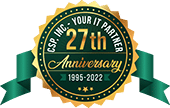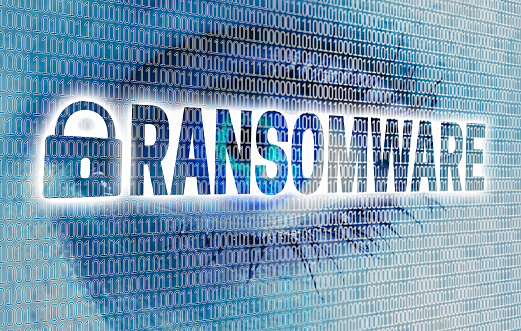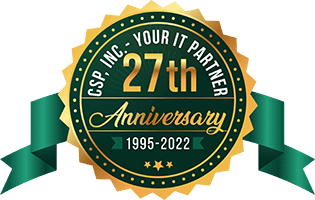1310 Nowell Road
Raleigh, NC 27607
1310 Nowell Road
Raleigh, NC 27607
Existing CSP Client: (919) 424-2060
SALES: (919) 420-3231

We’re all familiar with the regularity and severity of ransomware attacks. Most of us are also fully cognizant of the consequences of such cyberattacks. But, many still do not know exactly what to do when hit by a ransomware attack to remedy their PCs and computer networks of this most egregious form of cyberattack. This is why we’ve provided some crucial information, both on how to better prevent ransomware attacks, and how to limit the damage of such violations.

Since this post is primarily addressing what to do once ransomware has struck, we will list those steps to follow in the wake of such an attack first, and follow it up by giving you things to boost your ransomware preparedness level.
The Best Defense is Prevention
Businesses can often avoid ransomware demands by taking preventive measures. For example, companies have greatly benefited from employee training and tutorials designed to help them identify hazardous email attachments, harmful websites, phishing and even ransomware-delivery attempts.
Implement education and awareness in the workplace. It is a proven fact that a better educated and aware individual or office staff will be far less likely to click on questionable links such as those embedded in email phishing schemes. Having strong cybersecurity policies in the workplace will greatly reduce the chances of a ransomware attack.
Engage in frequent backups. Frequently backing-up your data is the best way to avoid ransomware and cryptoworm attacks. If you have solid enough backup measures in place, you can successfully ignore ransomware demands and encryptions. Always have offline backups in place, i.e. those that aren’t attached to PCs or networks. Viruses can even attack data that’s backed-up using cloud servers, so store at least one complete backup of your entire data network in a completely network-disconnected machine or device.
And here is some sage advice on preventing ransomware, courtesy of KirkHamSystems.com:
“Remember to remove unnecessary programs and update software whenever possible. Applications like Web browsers, PDF viewers, and video players frequently contain defects that make them vulnerable to these infections. Although hackers usually find more flaws to exploit, the latest updates can patch known security holes and minimize risks.
A network administrator should only permit each staff member to access the computers, drives, and directories that he or she truly needs to use. This will limit the ability of cryptoworms to spread throughout the network and infect every file. It also protects servers from any “rogue” employees.”
Get Professional IT Help for Ransomware
Many IT companies now offer a variety of free decryptor tools, and also know of tricks to neutralize and delete certain ransomware strains. If you need expert help with cyberattack prevention and cyber safety awareness and security, Raleigh IT Support Company and IT Services Provider | CSP Inc. is a proven leader in providing IT consulting and cybersecurity in Raleigh. Contact one of our friendly IT staff at (919) 424-2000 or send us an email at info@cspinc.com today, and we can help you with all of your cyber safety, defense, and security questions or needs.

Always at your service to provide the highest level of quality support to our customers.

Anthony Firth Client Engineer

“I’m passionate about building and fostering relationships, and finding solutions for success.”

Michael Koenig Client Account Manager

“I help clients stabilize and grow their IT infrastructure so they can focus on growing their core business.”

Josh Wilshire Systems Engineer Team Lead

“I strive to provide the highest level of quality service to our customers.”

Tommy Williams Sr. Hardware Engineer

“I’m driven by the steadfast belief that technology must serve as a business enabler. This mantra has driven 21
Years of successful partnerships.”

Stephen Riddick VP Sales & Marketing

“CSP doesn’t succeed unless your company succeeds.”

Stephen Allen Inventory Manager

“Through my intuition and genuine concern to help others I have built long-lasting relationships with our customers, co-workers and business partners.”

Scott Forbes VP Support Services

“Every day, I work with clients to help plan the future of their businesses.”

Michael Bowman vCIO

“Your IT problems become our IT solutions.”

Mark McLemore Project Engineer

“Managing internal and external operations to ensure that CSP provides quality and reliable customer service .”

Margie Figueroa Business Manager

“Providing quality internal and externals financial support to our customers and accounting support to CSP.”

Katie Steiglitz Accounting Administrator

“Some call me the CEO. I call myself the Cheerleader for an awesome team!”

William B. Riddick Founder & CEO

“CSP is here to assist you with your IT needs.”

Beth Wylie Inside Sales Manager




On What Questions You Need To Ask Before Signing Any Agreement.
"*" indicates required fields

Raleigh IT Support Company and IT Services Provider | CSP Inc.
1310 Nowell Rd,
Raleigh, NC 27607
Existing CSP Client: (919) 424-2060
SALES: (919) 420-3231
Receive email updates and informative marketing materials by subscribing to our newsletter.
"*" indicates required fields